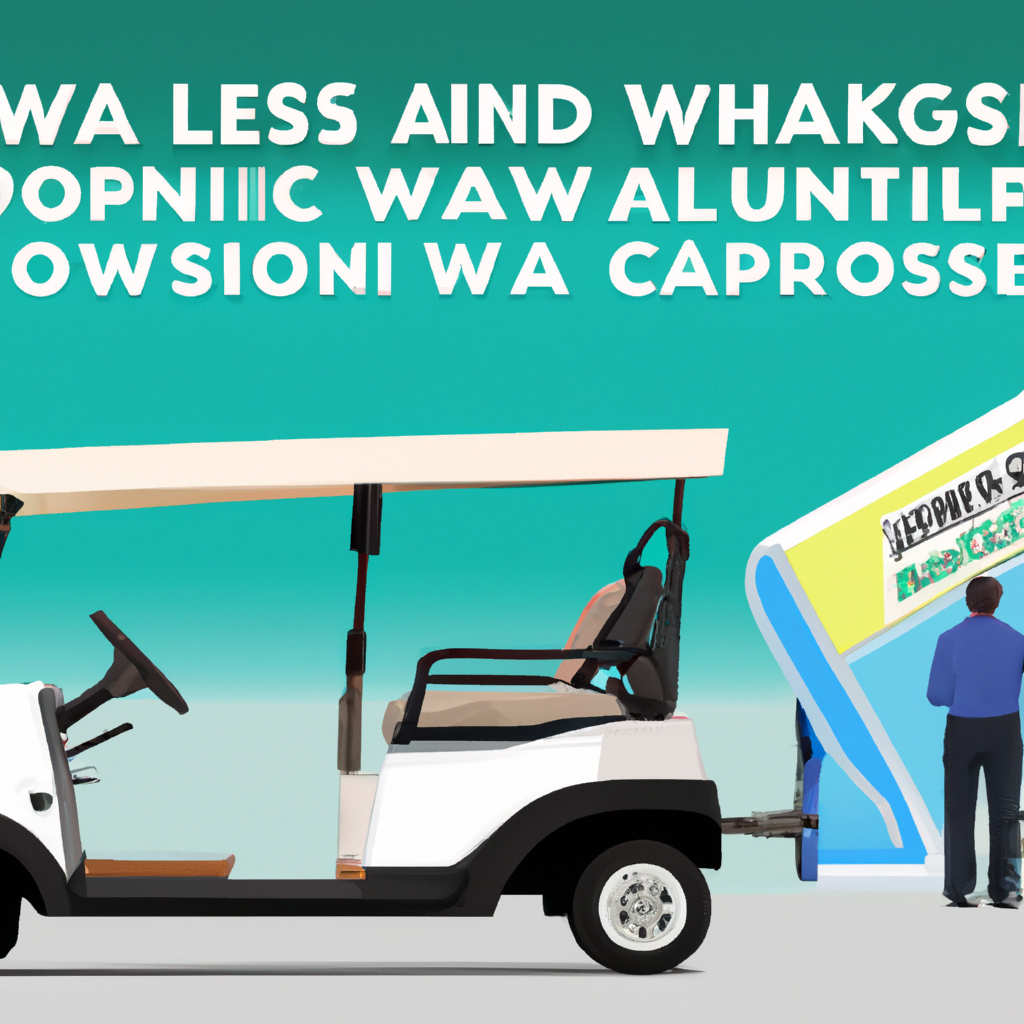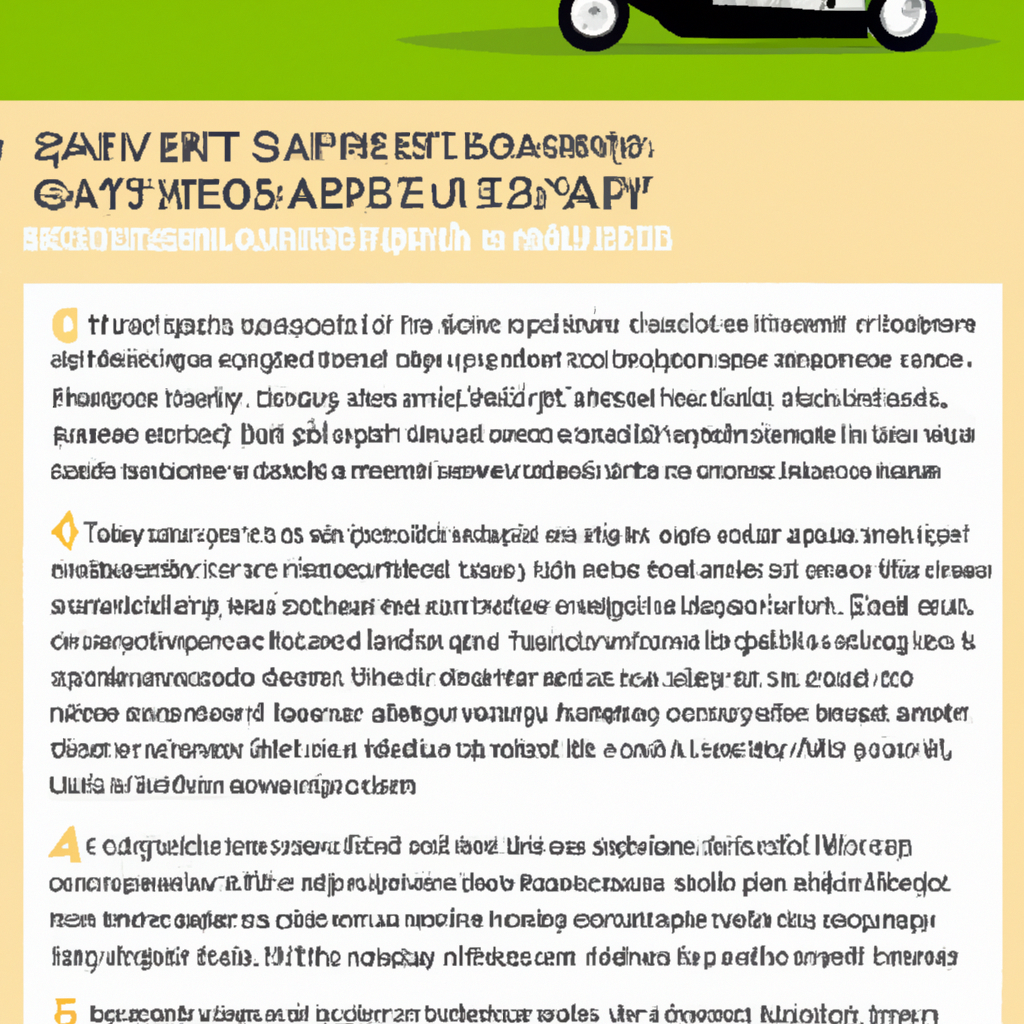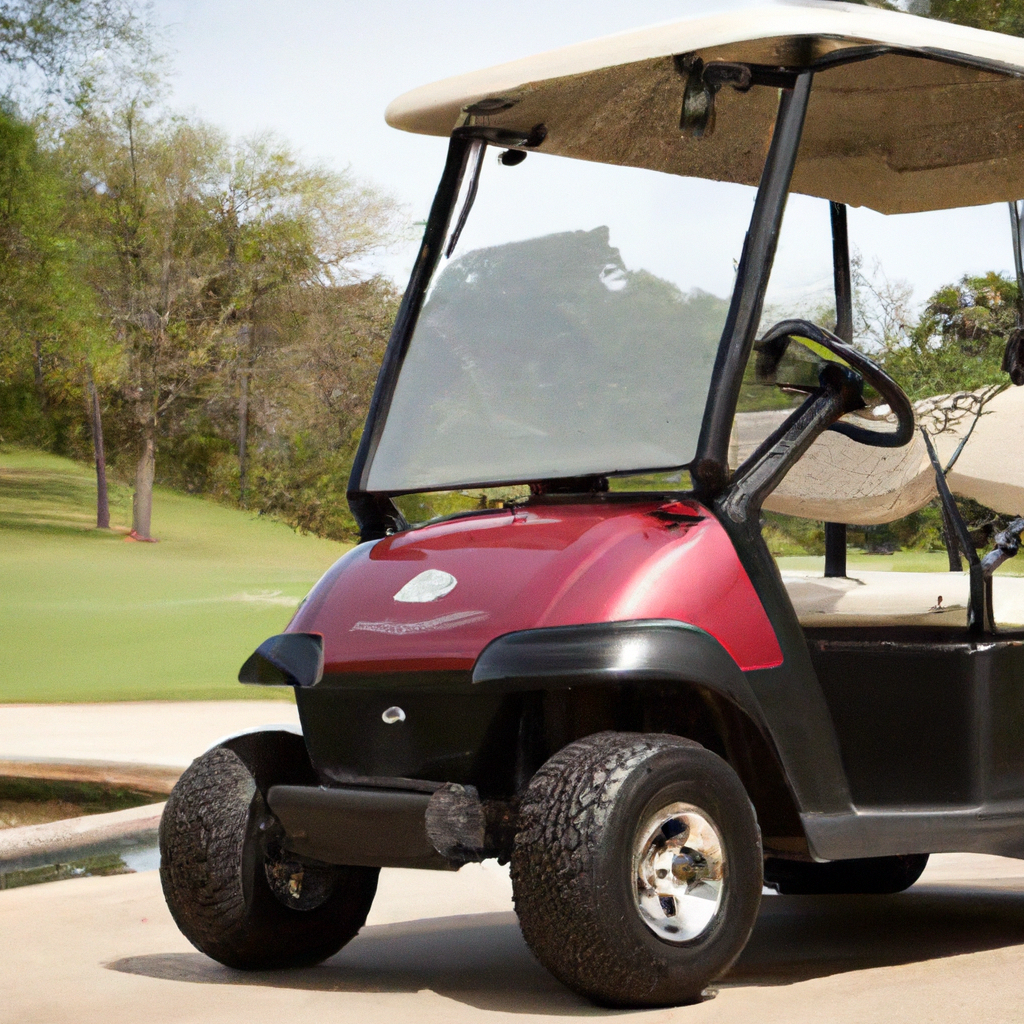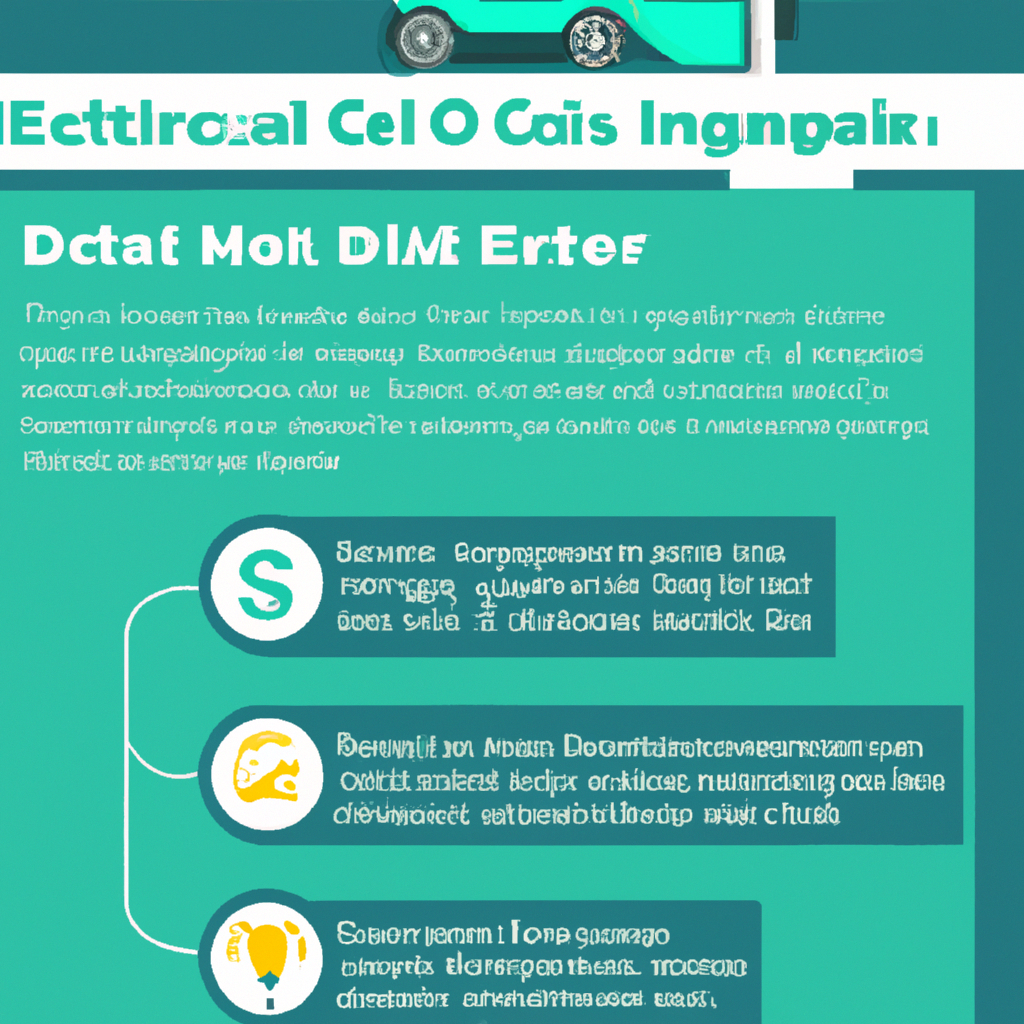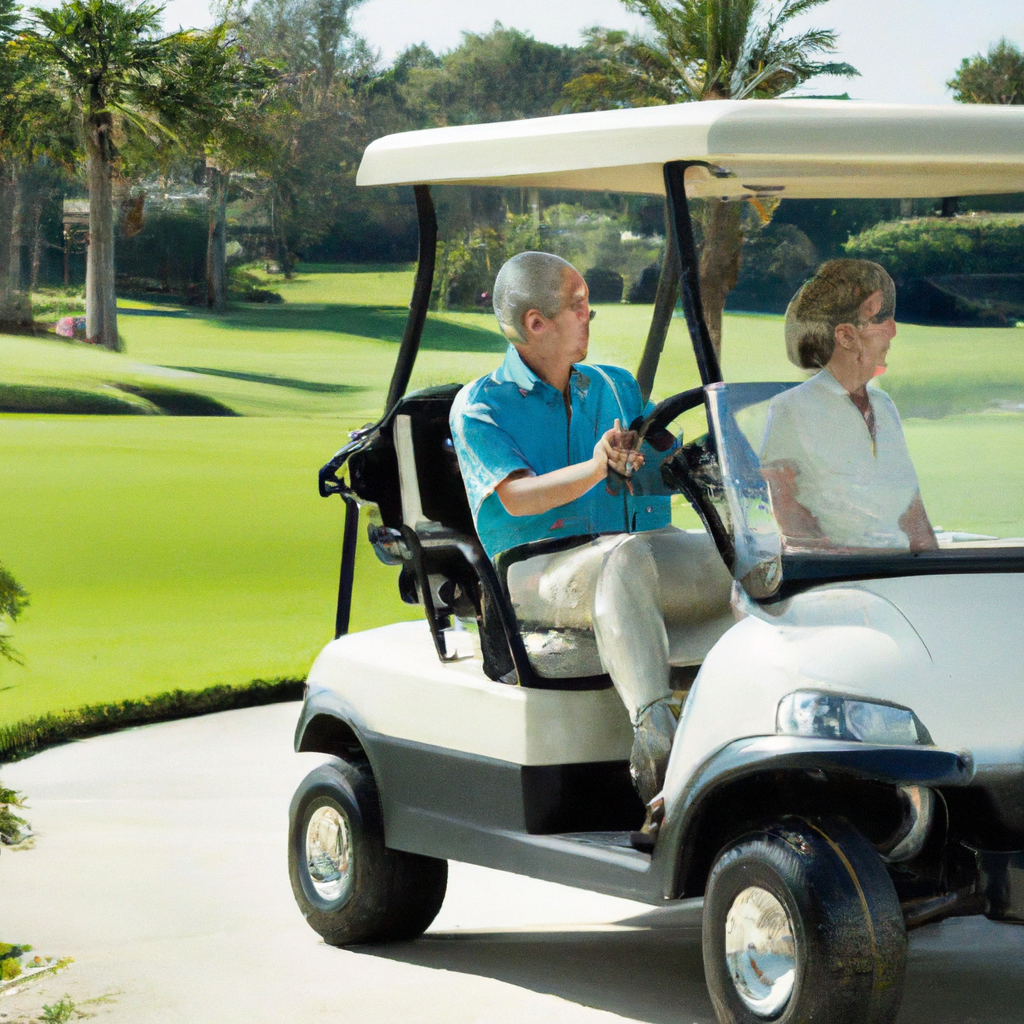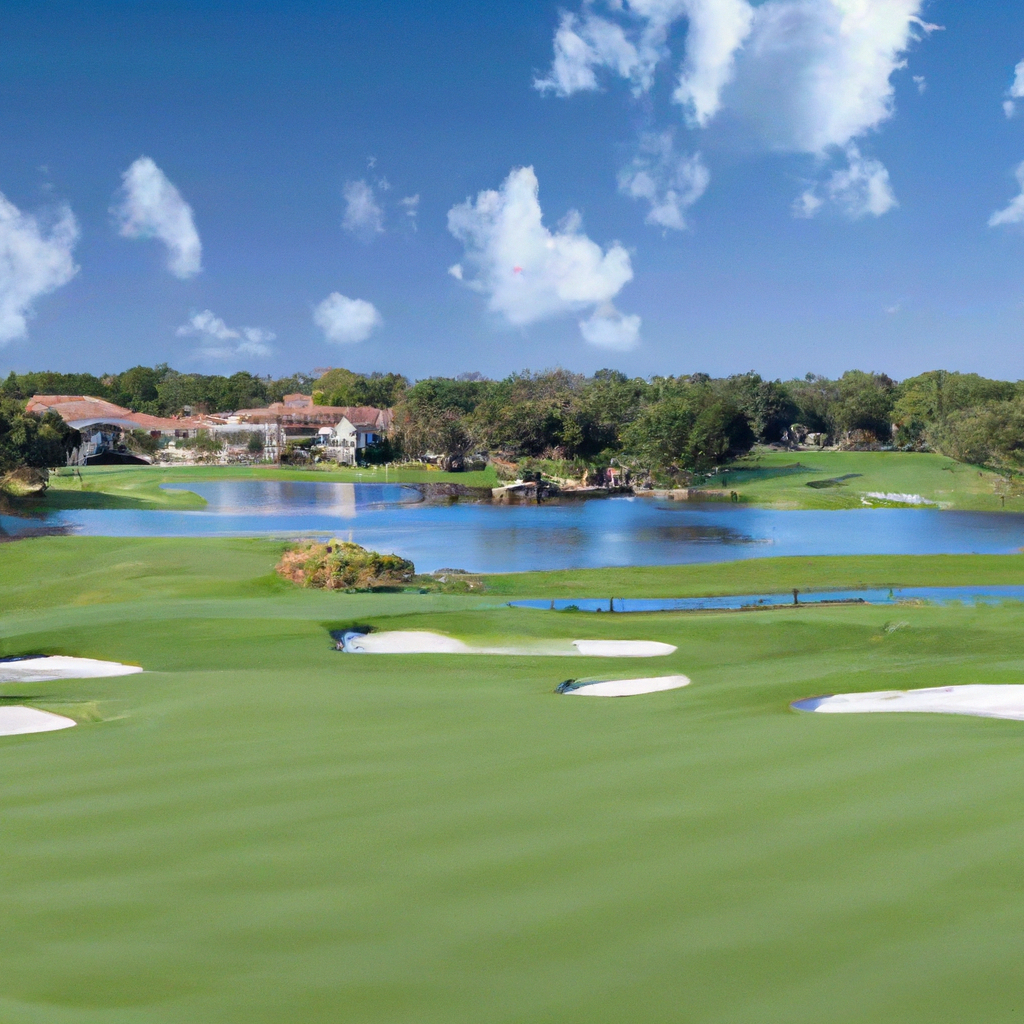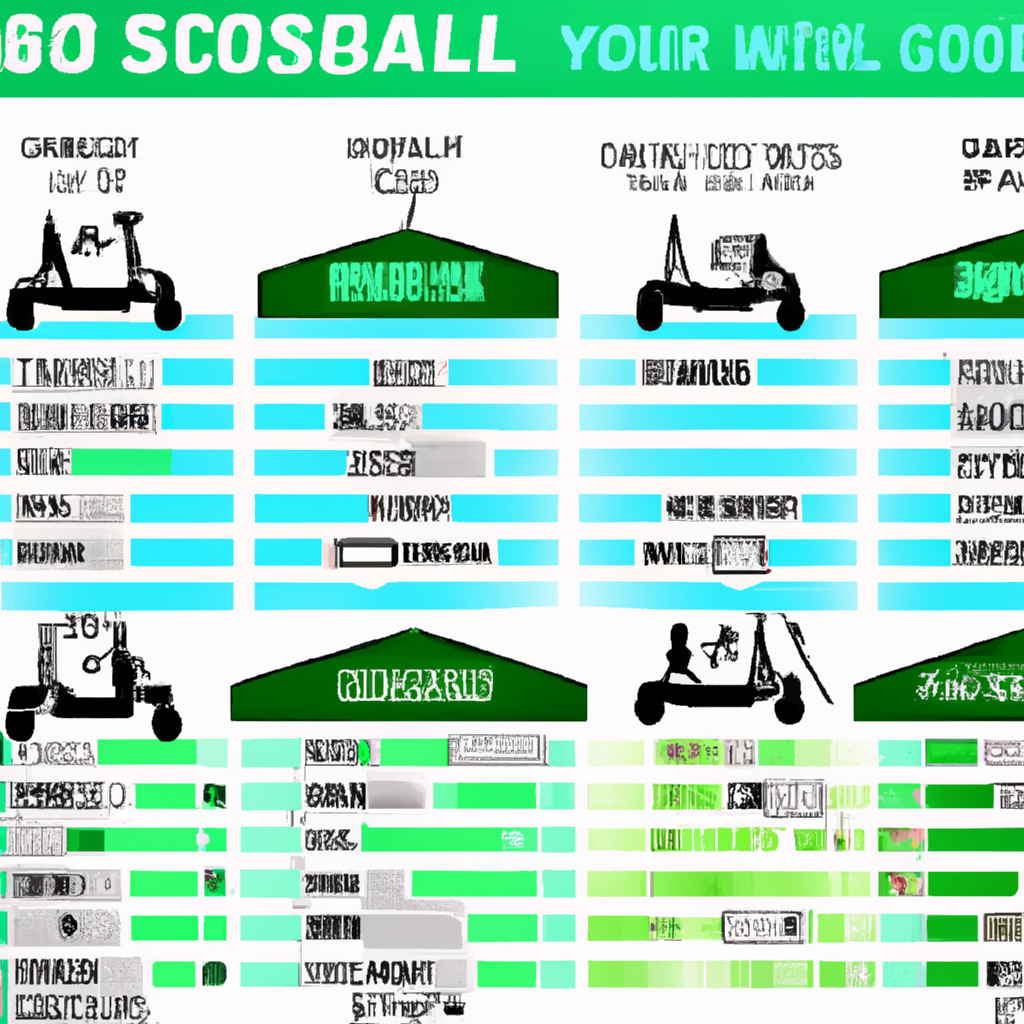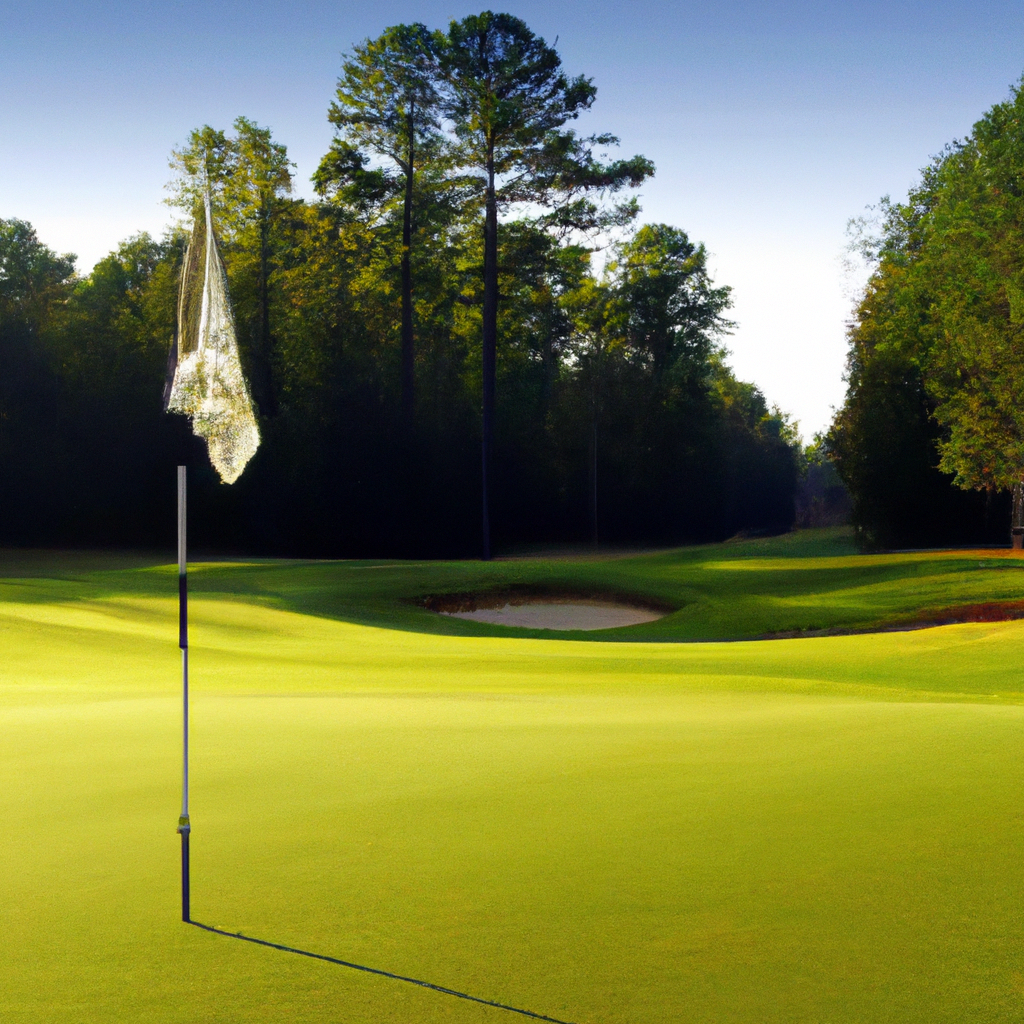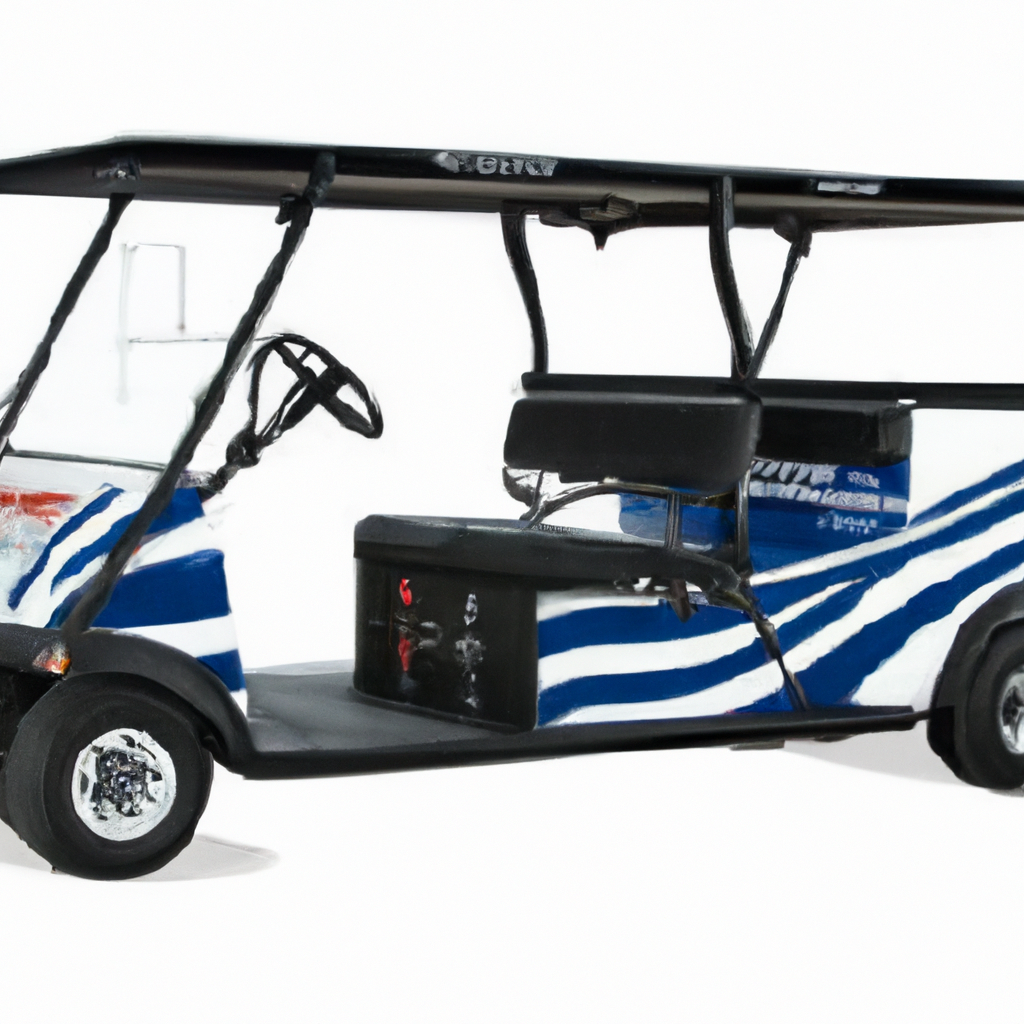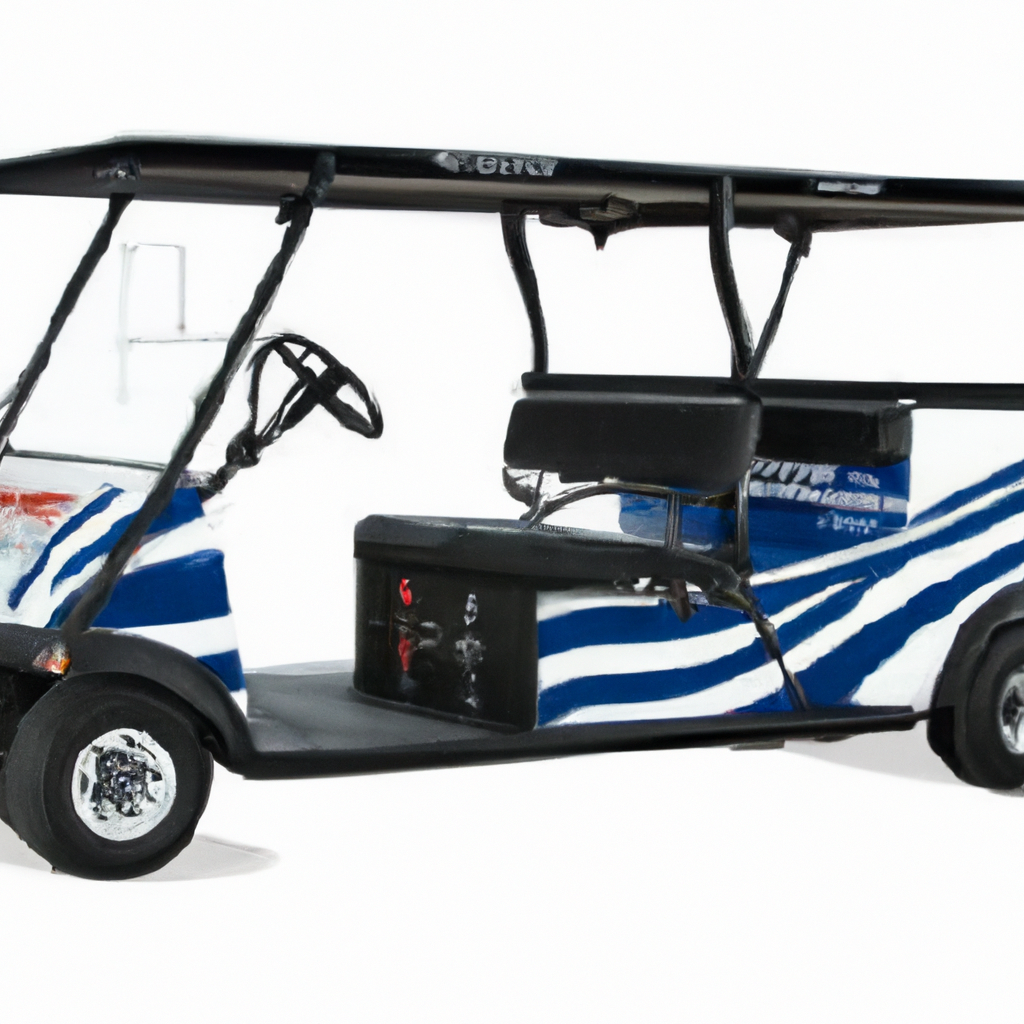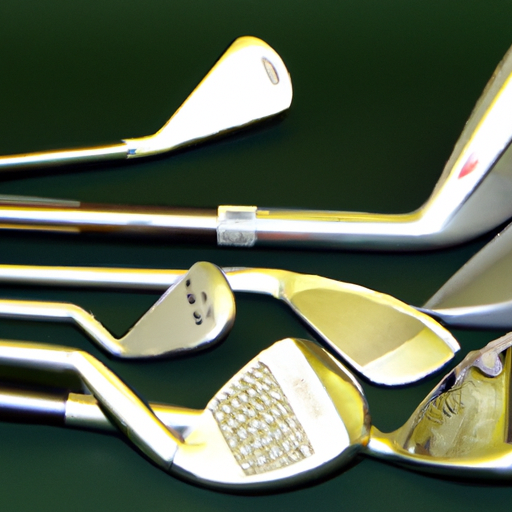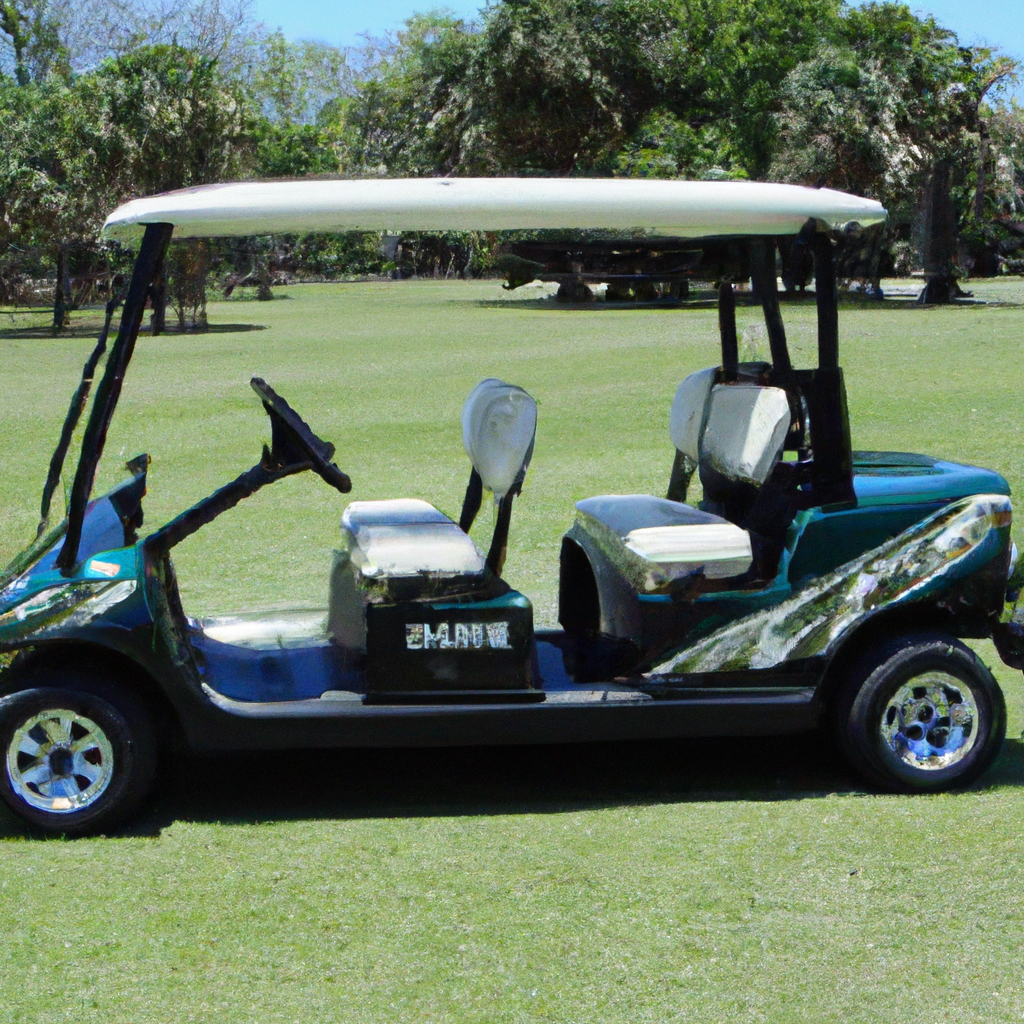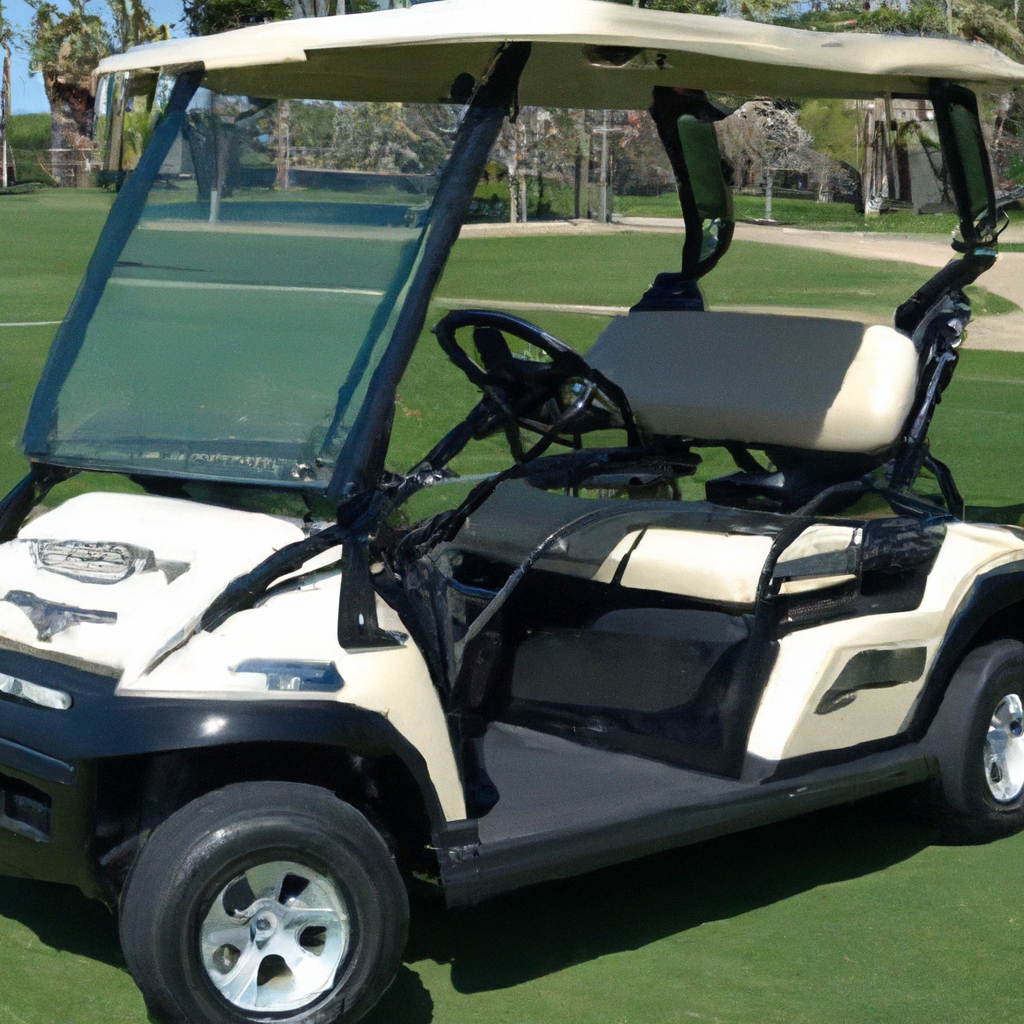Have you ever wondered about the cost of an electric golf cart? Whether you’re an avid golfer or just looking for a fun way to get around, knowing the price of an electric golf cart is essential. In this article, we will explore the various factors that influence the cost of these eco-friendly vehicles, including brand, features, and customization options. By the end, you’ll have a better understanding of what to expect when it comes to investing in your very own electric golf cart. So, let’s get started!

Factors Affecting the Cost of an Electric Golf Cart
When considering the cost of an electric golf cart, there are several factors that can influence the price. These factors include the brand, model, battery type, charger type, and additional features of the golf cart. By understanding how these factors can impact the cost, you can make an informed decision when choosing the right electric golf cart for your needs.
Brand
The brand of an electric golf cart can have a significant impact on its price. Well-known and reputable brands tend to have higher prices compared to lesser-known brands. This is because established brands often have a long-standing reputation for producing reliable and high-quality carts. However, it’s important to note that while brand reputation is often associated with higher prices, it doesn’t always guarantee better performance or durability.
Model
Just like with cars, different models of electric golf carts are available on the market. Each model comes with its own set of features and specifications, which can affect the price. Generally, more advanced and feature-rich models will have a higher price tag. It’s important to assess your needs and consider the features that are essential for your intended use before making a decision on which model to purchase.
Battery Type
The type of battery used in an electric golf cart can greatly influence its cost. There are typically two types of batteries used in electric golf carts: lead-acid batteries and lithium-ion batteries. Lead-acid batteries are more affordable upfront but have a shorter lifespan and require more maintenance. On the other hand, lithium-ion batteries are more expensive initially but offer longer life spans, faster charging times, and require less maintenance. The choice of battery type will depend on your budget and long-term needs.
Charger Type
The charger used to recharge the golf cart’s battery is another factor to consider when it comes to cost. Fast chargers, which can charge the battery in a shorter amount of time, tend to be more expensive compared to standard chargers. However, investing in a fast charger can be beneficial if you require frequent recharging or have limited time for charging during your golf outings.
Additional Features
Electric golf carts can come with a variety of additional features that can enhance your golfing experience but also increase the cost. Some common additional features include headlights, a windshield, a cooler, a GPS system, upgraded seating, and stereo systems. While these features can add convenience and enjoyment, they will also add to the overall price of the golf cart. Consider which features are important to you and prioritize them based on your budget.
Average Price Range of Electric Golf Carts
Electric golf carts come in different price ranges, depending on their quality, features, and brand. Understanding these price ranges can help you determine which type of golf cart fits within your budget. Here are the average price ranges for electric golf carts:
Entry-Level Electric Golf Carts
Entry-level electric golf carts typically have basic features and a more affordable price tag. These carts generally range from $3,000 to $5,000. While they may lack some of the advanced features found in higher-end models, they can still be reliable and suitable for recreational golfing.
Mid-Range Electric Golf Carts
Mid-range electric golf carts offer a balance between affordability and features. These carts usually range from $5,000 to $8,000. They often include additional features such as headlights, a windshield, and upgraded seating. Mid-range electric golf carts are a popular choice for both recreational golfing and occasional professional use.
High-End Electric Golf Carts
For those looking for the top-of-the-line electric golf carts with all the bells and whistles, high-end models are available. These carts can range from $8,000 to $15,000 or more, depending on the brand and features. High-end electric golf carts often feature luxurious amenities, advanced technology, and superior performance. They are commonly favored by professional golfers or individuals seeking the ultimate golfing experience.
It’s important to note that these price ranges are approximate and can vary depending on factors such as brand reputation, model complexity, and regional pricing fluctuations.
Cost Breakdown of Electric Golf Carts
To better understand the cost components of an electric golf cart, we will break down the expenses into different categories.
Battery Cost
The battery is one of the most crucial components of an electric golf cart, and its cost varies depending on the type and quality. Lead-acid batteries, the more affordable option, can cost anywhere from $500 to $1,000 for a set. However, they may need to be replaced every 3-5 years. Lithium-ion batteries, known for their longevity and performance, can cost anywhere from $1,500 to $3,000 for a set, but typically last longer than lead-acid batteries.
Charger Cost
The cost of an electric golf cart charger can range from $200 to $500. Fast chargers, which are more expensive, can cost up to $1,000 or more. It’s worth considering the charging time and convenience when deciding on the charger type and price range.
Accessories Cost
Additional accessories such as headlights, windshields, upgraded seating, and stereo systems can significantly impact the overall cost of an electric golf cart. These accessories vary in price depending on the brand and quality. On average, these accessories can range from $200 to $1,000, or even more for high-end customization.
Maintenance Cost
Maintenance costs for electric golf carts can include routine maintenance, periodic battery replacements, and repairs. Routine maintenance, such as tire rotations and brake inspections, can cost between $100 and $200 per year. Battery replacements, depending on the battery type, can cost anywhere from $500 to $3,000. Repair costs will vary depending on the issue and can range from minor fixes to more extensive repairs, potentially costing a few hundred dollars or more.
It’s important to consider these costs when budgeting for an electric golf cart, as they will contribute to the overall cost of ownership over the lifespan of the cart.

New vs. Used Electric Golf Carts
When deciding between a new or used electric golf cart, there are several factors to consider, including the price difference, reliability, warranty, and customization options.
Price Difference
Used electric golf carts are generally more affordable compared to new ones. The price of a used electric golf cart can vary significantly depending on factors such as age, condition, and brand. On average, used electric golf carts can range from $2,000 to $7,000, depending on their age and condition. New electric golf carts, on the other hand, can range from $3,000 to $15,000 or more, depending on the brand and features.
Reliability
New electric golf carts often offer better reliability due to their newer components and limited wear and tear. However, this does not mean that used electric golf carts are inherently unreliable. When purchasing a used electric golf cart, it’s important to thoroughly inspect the cart, including the battery and overall condition, to ensure it is in good working order.
Warranty
New electric golf carts typically come with a manufacturer’s warranty, providing protection against potential defects and mechanical issues. These warranties can vary in length and coverage, depending on the brand. On the other hand, used electric golf carts may not come with a warranty, or any existing warranty may have expired. This can leave you responsible for any repair costs that may arise.
Customization Options
New electric golf carts often offer more customization options, allowing you to personalize your cart to your specific needs and preferences. From paint colors to additional features, new electric golf carts provide a greater range of options. Used electric golf carts may have some customization, but the options may be limited depending on the previous owner’s modifications.
Considering these factors, it’s important to weigh the pros and cons of both new and used electric golf carts to determine which option best suits your budget and requirements.
Additional Costs Associated with Electric Golf Carts
In addition to the upfront cost of an electric golf cart, there are several additional costs to consider. These costs include golf cart insurance, license and registration fees, storage and maintenance expenses, and any upgrades or modifications you may desire.
Golf Cart Insurance
To protect your investment, it’s a good idea to consider purchasing golf cart insurance. Golf cart insurance can provide coverage against theft, accidents, and liability. Costs for golf cart insurance can range from $100 to $300 per year, depending on the coverage options and the value of the cart.
Golf Cart License and Registration
Depending on your location, electric golf carts may require registration and a license to operate legally on public roads or golf courses. The cost of registration and licensing fees can vary depending on your jurisdiction. Generally, these costs range from $50 to $200, depending on the region.
Storage and Maintenance Expenses
Storing your electric golf cart when not in use may require additional expenses. Whether it’s a dedicated garage or a rented storage space, these costs can vary based on your location and the available options. Additionally, regular maintenance costs such as battery replacements, tire rotations, and other routine services should be factored into your budget. These costs can vary depending on the extent of maintenance required and can range from $100 to $500 per year.
Upgrades and Modifications
If you wish to customize your electric golf cart with additional features or upgrades, there will be associated costs. The price of upgrades and modifications will depend on the specific enhancements you desire. Whether it’s adding a cooler, upgrading the seating, or installing a more advanced stereo system, these costs can range from a few hundred dollars to several thousand dollars, depending on the complexity and quality of the upgrades.
Factors to Consider When Buying an Electric Golf Cart
There are several important factors to consider when buying an electric golf cart to ensure you choose the right one for your needs. By considering these factors, you can make a well-informed decision and buy a golf cart that meets your expectations.
Intended Use
Before purchasing an electric golf cart, consider how you plan to use it. Will you be primarily using it on the golf course, or do you plan to drive it on public roads or other off-road terrains? Understanding your intended use will help determine the right model and features required.
Golf Course Policies
If you plan on using your electric golf cart primarily on golf courses, it’s essential to check the specific policies and regulations of the courses you frequent. Some golf courses may have restrictions on the type of golf cart allowed or require specific features such as a certain speed limit or GPS system.
Terrain Conditions
Consider the terrain conditions in the areas where you plan to use your electric golf cart. If you will be driving on hilly or rough terrain, you may require a more powerful golf cart with enhanced suspension for better stability and performance. For primarily flat and smooth terrain, a more basic model may suffice.
Seating Capacity
Determine how many people you expect to regularly transport in your electric golf cart. Golf carts typically come with seating capacities ranging from two to six passengers. It’s important to select a cart that can comfortably accommodate the number of people you will be transporting.
Range and Battery Life
The range and battery life of an electric golf cart are important considerations, especially if you plan on using it for extended periods or long distances. Higher-end electric golf carts generally offer longer ranges and battery life, allowing for more extended use without needing to recharge.
Speed and Performance
The speed and performance capabilities of an electric golf cart can vary. If you are looking for faster acceleration and higher top speeds, you may need to invest in a more powerful model. However, it’s important to consider any speed restrictions or regulations that may apply to your intended use.
Comfort and Ergonomics
Comfort features such as padded seating, adjustable seats, and suspension systems can greatly enhance your overall experience when using an electric golf cart. Consider the ergonomics and comfort features that are important to you, especially if you plan on spending long hours in the cart.
Warranty and After-Sales Support
When purchasing an electric golf cart, it’s important to consider the warranty and after-sales support offered by the manufacturer or dealer. A comprehensive warranty and reliable after-sales support can provide peace of mind in case of any issues or repairs needed.
Resale Value
While it may not be a significant concern when initially purchasing an electric golf cart, considering the potential resale value can be beneficial in the long run. Certain brands and models tend to hold their value better, making them attractive options for resale should you decide to upgrade or no longer need the cart.
Popular Brands and Models of Electric Golf Carts
Several brands offer electric golf carts, each with its own reputation and range of models. Some of the popular brands and models to consider include:
E-Z-GO
E-Z-GO is a well-known brand and offers a range of electric golf carts known for their reliability and durability. Their carts feature various models, including options for recreational use, professional golfing, and utility purposes.
Club Car
Club Car is another reputable brand that manufactures electric golf carts. They are known for their high-quality carts and offer a wide range of models suitable for different needs, including golfing and personal transportation.
Yamaha
Yamaha is renowned for its expertise in manufacturing various vehicles, including electric golf carts. They offer a selection of models that combine performance, durability, and comfort features.
Star EV
Star EV is a brand that offers electric golf carts designed with a focus on style and performance. Their carts are known for their sleek designs and customizable options.
Columbia ParCar
Columbia ParCar is a brand that provides electric golf carts designed for both recreational and professional use. They offer a range of models built with durability and performance in mind.
Tomberlin
Tomberlin is a brand that specializes in manufacturing street-legal electric golf carts. Their carts are known for their advanced technology and safety features.
Garia
Garia is a luxury brand that offers high-end electric golf carts. Their carts combine top-notch performance, advanced technology, and luxurious amenities.
ICON EV
ICON EV produces electric golf carts that focus on sustainability and eco-friendliness. Their carts are known for their energy-efficient performance and stylish designs.
Stromer
Stromer is a brand that specializes in premium electric golf carts known for their precision engineering, innovative features, and high-quality craftsmanship.
Stewart Electric Vehicles
Stewart Electric Vehicles is a brand that manufactures electric golf carts with a focus on durability, performance, and affordability. They offer a range of models suitable for recreational use.
Comparing Electric Golf Carts to Gas-Powered Golf Carts
While electric golf carts are becoming increasingly popular, it’s essential to consider the differences between electric and gas-powered golf carts when making a purchasing decision. Here are some factors to consider:
Initial Cost
In general, gas-powered golf carts tend to have a lower initial cost compared to electric golf carts. However, the difference in prices can vary depending on the specific brand, model, and features.
Operational Cost
When it comes to operational costs, electric golf carts have a significant advantage. Electric carts are more energy-efficient, and the cost of electricity is generally lower than the cost of gasoline. Charging an electric golf cart is often more affordable than filling up a gas tank, making electric carts more cost-effective in the long run.
Performance
Both electric and gas-powered golf carts offer their own performance benefits. Electric golf carts provide smooth acceleration and quieter operation. Gas-powered golf carts, on the other hand, may deliver faster top speeds and more torque for uphill climbs. Ultimately, the choice between performance characteristics will depend on your preferences and intended use.
Noise and Emissions
Electric golf carts are known for their quiet operation, producing minimal noise pollution on the golf course or in residential areas. Gas-powered golf carts, on the other hand, generate noise and emissions from their engines. If noise and environmental impact are concerns, electric golf carts are a better choice.
Maintenance
Maintenance requirements for electric golf carts are generally lower compared to gas-powered carts. Electric carts do not require oil changes, air filter replacements, or spark plug maintenance. However, electric golf carts do require battery maintenance and periodic replacement, which should be factored into the overall maintenance costs.
Resale Value
The resale value of both electric and gas-powered golf carts can be influenced by factors such as brand, model, age, condition, and market demand. However, electric golf carts tend to have higher resale values since they are often perceived as more eco-friendly and efficient.
Considering these factors, it’s important to evaluate the pros and cons of both electric and gas-powered golf carts based on your specific needs and preferences.
Factors Impacting Resale Value of Electric Golf Carts
If you are considering the resale value of an electric golf cart, several factors can impact its value. These factors include the brand and model, condition, age, battery life, and market demand.
Brand and Model
The brand and model of an electric golf cart can influence its resale value. Well-known and reputable brands with a strong market presence often have higher resale values due to their reliability and established reputation. Additionally, certain models may be in higher demand, leading to increased resale values.
Condition
The overall condition of an electric golf cart greatly impacts its resale value. Carts that are well-maintained, free from damage, and in good working order are more likely to attract higher resale prices. Regular maintenance, such as performing necessary repairs and keeping the cart clean and in good condition, can help maintain its value.
Age
Age is a significant factor when determining the resale value of an electric golf cart. Generally, newer electric golf carts tend to have higher resale values since they have less wear and tear and are perceived as more reliable. However, the rate of depreciation may vary based on the brand and model.
Battery Life
The remaining life of the battery is an important consideration when assessing the resale value of an electric golf cart. Electric golf cart batteries have a limited lifespan, typically between 3 to 8 years depending on the type and usage. A well-maintained battery with a longer remaining life will contribute to a higher resale value.
Market Demand
Market demand plays a crucial role in determining the resale value of any product, including electric golf carts. Factors such as the popularity of electric golf carts in a particular region, changing consumer preferences, and industry trends can impact the demand and subsequent resale value of electric golf carts.
By considering these factors, you can better understand the potential resale value of an electric golf cart. It’s important to note that while resale value is an important consideration, it should not be the sole determinant when purchasing an electric golf cart. Other factors such as your intended use and personal preferences should also play a significant role in your decision-making process.
Conclusion
When considering the cost of an electric golf cart, it’s essential to take into account several factors that can influence its price. These factors include the brand, model, battery type, charger type, and additional features. Additionally, understanding the average price range of electric golf carts can help you determine which price bracket suits your budget.
By breaking down the cost components of electric golf carts, including battery cost, charger cost, accessories cost, and maintenance cost, you can better understand the ongoing expenses associated with owning an electric golf cart. Consider related costs such as golf cart insurance, license and registration fees, storage and maintenance expenses, and any desired upgrades or modifications.
When deciding between a new or used electric golf cart, it’s important to consider the price difference, reliability, warranty, and customization options associated with each option.
Several factors should be taken into account when buying an electric golf cart, including intended use, golf course policies, terrain conditions, seating capacity, range and battery life, speed and performance, comfort and ergonomics, warranty and after-sales support, as well as the potential resale value.
Popular brands and models of electric golf carts include E-Z-GO, Club Car, Yamaha, Star EV, Columbia ParCar, Tomberlin, Garia, ICON EV, Stromer, and Stewart Electric Vehicles. When comparing electric golf carts to gas-powered golf carts, it’s important to consider factors such as initial cost, operational cost, performance, noise and emissions, maintenance, and resale value.
Factors impacting the resale value of an electric golf cart include the brand and model, condition, age, battery life, and market demand. Understanding these factors can help you make an informed decision and maximize the value of your investment.
In conclusion, the cost of an electric golf cart can vary depending on several factors, but by considering these factors and conducting thorough research, you can find an electric golf cart that fits your needs and budget. Whether you prioritize performance, reliability, or customization options, there is an electric golf cart out there that will provide you with an enjoyable and efficient golfing experience for years to come.


